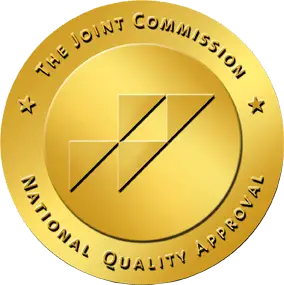Key Takeaways
- Opioid addiction is a complex health crisis with escalating prevalence due to factors like increased drug trafficking and availability of synthetic opioids.
- Young adults show the highest rates of opioid misuse, with genetic, socioeconomic, and mental health conditions influencing addiction.
- Opioid Use Disorder (OUD) is a chronic medical condition that can lead to significant impairment or distress, with a range of symptoms including tolerance, withdrawal, and continued use despite harmful consequences.
- The global burden of opioid addiction is significant, with over 1 million deaths since 1999, and a notable increase in opioid-related overdose deaths, especially involving synthetic opioids like fentanyl.
- Environmental factors such as socioeconomic status and exposure to drug use in communities are critical in influencing the risk of opioid addiction.
- Genetic factors account for approximately 50% of the vulnerability to opioid addiction, with recent studies identifying specific genetic markers.
- Recent advancements in opioid addiction treatment include the expansion of medication-assisted treatment (MAT) and the integration of holistic care approaches.
- Support groups are vital in the recovery journey, providing emotional support and a sense of community for those in treatment.
- Opioid addiction has a profound impact on society and the economy, with significant costs stemming from healthcare expenditures, lost productivity, and societal disruption.
- The opioid crisis has strained healthcare systems, with increased hospitalizations and treatment costs, necessitating improved pain management practices and access to mental health services.
Comprehensive Overview of Opioid Addiction
Opioid addiction is a complex and multifaceted health crisis that affects individuals and communities across various demographics. It is characterized by a compulsive urge to use opioid drugs, despite harmful consequences. The prevalence of opioid addiction has escalated, with factors such as increased drug trafficking, availability of high-purity heroin, and the proliferation of synthetic opioids like fentanyl contributing to this rise. Opioid misuse and opioid use disorders (OUD) have been linked to genetic predispositions, socioeconomic factors, and co-occurring mental health conditions.
Recent data indicates a shift in heroin marketing to suburban and rural areas, with sophisticated strategies like branding and free samples to entice new users. High-purity heroin now allows for non-injection methods of use, which can lead to a transition to injection and increased risks of overdose and infectious diseases. The lower cost of heroin and synthetic opioids compared to prescription opioids has also played a role in the transition from prescription opioid misuse to heroin and other illicit opioids.
Fentanyl, a synthetic opioid, is cheaper to produce and yields higher profit margins, leading to its widespread illicit manufacture and distribution. Young adults (age 18–25) show the highest rates of opioid misuse and OUD. Genetic studies have identified mu-opioid receptor genetics as a potential factor in the heritability of OUD, although socioeconomic factors like poverty and racial disparities also influence opioid misuse rates. Mental health disorders, particularly mood disorders, frequently co-occur with OUD, exacerbating the challenge of treatment and recovery.
The opioid crisis has led to a staggering number of overdose deaths, with more than 1 million fatalities since 1999. Over 75% of these deaths involved an opioid. The crisis has not only devastated individual lives but also placed immense strain on families, communities, and healthcare systems, underscoring the urgent need for accessible and effective treatment options.
Treatment Can Be Life Changing. Reach out today.

Understanding Opioid Use Disorder (OUD)
Opioid Use Disorder (OUD) is a medical condition characterized by the problematic use of opioid drugs, which can include prescription pain relievers, heroin, and synthetic opioids such as fentanyl. The American Psychiatric Association defines OUD as a chronic disorder that involves a pattern of opioid use leading to significant clinical distress or impairment in social, occupational, or other important areas of functioning. This disorder is diagnosed according to the Diagnostic and Statistical Manual of Mental Disorders (DSM-5), which requires the presence of at least two specific symptoms over a 12-month period. These symptoms may include an intense desire to use opioids, difficulties in controlling opioid use, persistent use despite harmful consequences, tolerance, withdrawal, and neglect of major roles due to opioid use.
From a psychological perspective, OUD can also be seen as a condition that affects the brain's reward system, altering the individual's behavior and motivation. The compulsion to use opioids, despite negative consequences, is a hallmark of addiction. OUD is associated with an increased risk of comorbid medical conditions, infectious diseases, and mental health issues, necessitating a comprehensive approach to treatment and recovery. The prevalence and severity of OUD have made it a public health crisis, with a significant impact on individuals, families, and communities. It's essential to address the stigma and barriers to treatment to effectively combat this disorder.
Identifying Symptoms of Opioid Addiction
Opioid addiction is a complex condition characterized by a range of physical, psychological, and behavioral symptoms that can severely impact an individual's health and well-being. According to the Diagnostic and Statistical Manual of Mental Disorders (DSM-5), a diagnosis of opioid use disorder (OUD) requires the presence of at least two specific symptoms within a 12-month period. These symptoms are indicative of a pattern of opioid use leading to significant impairment or distress.
- Continued opioid use despite knowledge of persistent or recurrent physical or psychological problems likely caused or exacerbated by opioids.
- Increased tolerance, meaning more of the drug is needed to achieve the desired effect, or diminished effect with continued use of the same amount.
- Withdrawal symptoms when opioids are not taken, or use of opioids (or a closely related substance) to relieve or avoid withdrawal symptoms.
- Failure to fulfill major role obligations at work, school, or home due to opioid use.
- Recurrent opioid use in situations where it is physically hazardous.
- Development of a persistent desire or unsuccessful efforts to cut down or control opioid use.
- Spending a great deal of time obtaining, using, or recovering from the effects of opioids.
- Important social, occupational, or recreational activities given up or reduced because of opioid use.
- Cravings, or a strong desire or urge to use opioids.
Recognizing these symptoms is crucial for early intervention and treatment. If you or someone you know exhibits these symptoms, seeking professional help is essential. The Centers for Disease Control and Prevention (CDC) and the Substance Abuse and Mental Health Services Administration (SAMHSA) provide resources for finding treatment and support for OUD.
Global and Regional Prevalence of Opioid Addiction
The global burden of opioid addiction continues to be a significant public health challenge. According to a study from the Global Burden of Disease, the age-standardized rate of opioid dependence was 510 people per 100,000 globally in 2017. This figure underscores the widespread nature of opioid addiction across different populations and regions. Research also reveals that more than 1 million people have died since 1999 from a drug overdose, with over 75% of these deaths in 2021 involving an opioid, highlighting the lethal consequences of this epidemic. The Centers for Disease Control and Prevention (CDC) provides further data, indicating a persistent rise in opioid-related overdose deaths, particularly involving synthetic opioids like fentanyl.
Regionally, the United States has seen an alarming increase in opioid-related overdose deaths, with 70,630 Americans dying of overdose in 2019 and even more in subsequent years, exacerbated by the COVID-19 pandemic. The NIH HEAL Initiative 2024 Annual Report further emphasizes the ongoing research efforts to address this crisis, including the development of new treatments and interventions. The CDC's data briefs also reflect changes in overdose death rates among different age groups, with increases observed in adults aged 35 and older.
These statistics not only illustrate the severity of opioid addiction but also the urgent need for comprehensive treatment and prevention strategies. The intersection of mental health and substance use disorders, as well as socioeconomic factors, play a crucial role in the prevalence and impact of opioid addiction, necessitating a multifaceted approach to this complex issue.
Exploring the Multifaceted Causes of Opioid Addiction
Opioid addiction is a complex condition influenced by an intricate interplay of genetic, environmental, and psychological factors. Studies, such as those conducted by researchers at Yale School of Medicine and VA Connecticut Healthcare System, have highlighted the significant role environmental factors play in the risk for opioid use disorder (OUD). For instance, socioeconomic variables like household income and education level can greatly influence the likelihood of developing OUD, often more so than genetic predispositions alone.
Despite the notable impact of environmental elements, genetics still play a crucial role. Research indicates that genetic factors account for approximately 8% of the variance in opioid dependence. Specific genes associated with opioid receptors, and the dopaminergic and serotonergic systems, have been identified as contributing to the risk of OUD. The genetic underpinnings of addiction suggest that some individuals may have an inherent susceptibility to substance use disorders (SUDs), including OUD.
Psychological factors are also pivotal, with mental health conditions frequently interwoven with substance use. The relationship between SUDs and other mental health disorders underscores the need for a comprehensive approach to treatment and prevention that addresses both genetic and environmental influences. Understanding the multifaceted causes of opioid addiction is essential for developing effective interventions and reducing the prevalence of this devastating disorder.
The Role of Genetics in Opioid Addiction Risk
Research into the genetics of opioid addiction has revealed that heritability plays a significant role in an individual's risk for developing opioid use disorder (OUD). Studies, including those by Tsuang et al., Kreek et al., and others, have consistently found that approximately 50% of the vulnerability to opioid addiction can be attributed to genetic factors. Twin and family studies have been instrumental in establishing this connection, highlighting the importance of genetic predispositions in the development of substance addictions.
Despite these findings, the utility of current genetic predictors for clinically meaningful predictions remains limited. As the research progresses, the identification of specific genetic markers, such as single nucleotide polymorphisms (SNPs), continues to evolve. A recent large-scale genome-wide association study (GWAS) increased the number of known risk genes from 1 to 19, offering new insights into the genetic underpinnings of OUD and related substance use disorders.
While genetic factors are influential, it's important to note that they interact with environmental and psychosocial elements. For example, selected environmental factors like household income and education level have been shown to explain a greater risk variance compared to polygenic risk scores alone. Nevertheless, these scores still accounted for an 8% variance in opioid dependence, signifying a notable genetic contribution to the risk of OUD.
Environmental Influences on Opioid Addiction
Environmental factors play a critical role in the development and perpetuation of opioid addiction. These factors encompass a range of conditions and circumstances that individuals may encounter in their surroundings, which can influence their risk of substance use and addiction. Research has identified several key environmental contributors to opioid addiction, emphasizing the complexity of this public health issue.
- Exposure to Drug Use: Living in communities where drug use is prevalent increases the likelihood of individuals engaging in substance use themselves. This exposure can normalize drug use and make substances more readily accessible.
- Socioeconomic Status: Lower socioeconomic status, including factors such as limited household income and lower education levels, has been associated with a higher risk of opioid addiction. Economic stressors can drive individuals towards substance use as a coping mechanism.
- Neighborhood Disadvantage: Residing in neighborhoods characterized by concentrated disadvantage and disorder can contribute to substance use behaviors. These areas may have higher rates of crime and violence, fewer resources, and limited access to treatment facilities.
- Natural Disasters and Pandemics: Events like the COVID-19 pandemic and climate disruptions have been linked to increased opioid use and overdoses, highlighting how large-scale crises can exacerbate public health inequities and impact vulnerable populations.
Understanding the environmental factors in opioid addiction is essential for developing targeted prevention and intervention strategies. Addressing these factors requires a multifaceted approach that includes improving access to education, healthcare, and economic opportunities, as well as fostering community resilience and support systems.
Exploring Psychological Factors Contributing to Opioid Addiction
Opioid addiction is not solely a physical dependence on substances; it is deeply intertwined with various psychological factors and mental health conditions. The opioid crisis, labeled as one of the most complex public health issues, sees mental health as a significant contributor to its proliferation. Mental health crises, stigma, and lack of community support are recognized as key psychological elements fueling opioid addiction. Research indicates that the stigma associated with substance use disorders, particularly within healthcare and regulatory agencies, exacerbates the challenges faced by those struggling with addiction.
Psychological interventions are increasingly recognized for their importance in addressing opioid addiction. Interventions like the Youth Opioid Recovery Support (YORS) involve family members in the treatment process, which not only aids in medication adherence but also provides a support system for the individual. This approach acknowledges the psychological need for support and community in the recovery journey. Moreover, the impact of psychological interventions is evidenced in the development and advocacy of programs that assist patients in overcoming the barriers to recovery, as highlighted by experts from Brown University and the National Institutes of Health’s (NIH) Helping to End Addiction Long-term (HEAL) Initiative.
Additionally, environmental factors such as socioeconomic status, indicated by household income and education level, have been found to significantly influence the risk of opioid dependence, often more so than genetic factors alone. These findings, published in Psychological Medicine, underscore the importance of considering the broader psychological and environmental context when addressing opioid addiction.
Advancements in Opioid Addiction Treatment Options
Recent advancements in opioid addiction treatment have been significant, particularly in the expansion of medication-assisted treatment (MAT) and the integration of holistic care approaches. The Center for Health Care Strategies highlights the importance of enhancing MAT in Federally Qualified Health Centers, emphasizing a more integrated approach to care post-COVID-19. This is echoed by the Substance Abuse and Mental Health Services Administration's (SAMHSA) final rule, which makes certain pandemic-era flexibilities permanent and broadens access to evidence-based treatments for opioid use disorder (OUD).
Furthermore, the philosophy behind MAT has evolved, moving away from purely abstinence-based programs to embrace harm reduction strategies. Innovations like monthly long-acting injections of buprenorphine present easier, more effective therapies for individuals struggling with opioid addiction, though accessibility remains a challenge. SAMHSA's final rule also updates admission criteria for Opioid Treatment Programs (OTPs), which now include patients diagnosed with OUD for less than a year and expands the definition of 'treatment practitioner' to increase treatment equity. These changes are designed to reduce stigma and encourage engagement in care.
Support groups continue to play a pivotal role in recovery, providing emotional support and a sense of community for those in treatment. The integration of harm reduction and recovery support services into OTPs signifies a broader, more inclusive approach to addiction treatment. As policies evolve and new treatments emerge, there is a concerted effort to address the deep-rooted issues of the opioid crisis and improve outcomes for those affected.
Medications Used in Opioid Addiction Treatment
The treatment of opioid addiction has evolved with recent regulatory changes aimed at increasing access to medications proven to aid in recovery. Research indicates that medications like methadone and buprenorphine are central to medication-assisted treatment (MAT) strategies, which combine medication with counseling and behavioral therapies. Methadone, traditionally dispensed at Opioid Treatment Programs (OTPs), is effective in reducing cravings and withdrawal symptoms. Recent policy updates have made it easier for patients to receive take-home doses and care via telehealth consultations.
Buprenorphine, another key medication in MAT, can now be prescribed through telehealth, improving reach to remote and underserved communities. The Substance Abuse and Mental Health Services Administration (SAMHSA) has permanently implemented changes allowing for such flexibilities that were initially introduced during the COVID-19 pandemic. This includes expanding the definition of 'treatment practitioner' to include a broader range of providers licensed to prescribe these medications.
These updates reflect a shift towards evidence-based practice and aim to reduce barriers to treatment, such as the stigma associated with seeking help at OTPs. The Biden-Harris Administration has also finalized updates to federal regulations for OTPs, removing the previous requirement that patients must have a history of addiction for a full year before being eligible for treatment. This significant regulatory overhaul is expected to improve treatment outcomes and support recovery efforts on a wider scale.
Therapeutic Approaches in Opioid Addiction Treatment
Therapy plays a crucial role in the treatment of opioid addiction, with various modalities offering support to individuals seeking recovery. Cognitive-Behavioral Therapy (CBT) and Motivational Interviewing (MI) are particularly prominent among these therapeutic approaches. CBT focuses on identifying and changing maladaptive thought patterns and behaviors, equipping individuals with coping strategies to manage triggers and cravings. A meta-analysis has demonstrated moderate to large effect sizes for CBT's efficacy in substance use disorders (SUDs), highlighting its potential to significantly impact recovery outcomes.
MI, on the other hand, is a client-centered counseling style for eliciting behavior change by helping patients to explore and resolve ambivalence. It complements CBT by addressing the lack of motivation to change, which is a common barrier in the adherence to treatment plans. Combining MI with medication-assisted treatment (MAT) has been shown to enhance patient engagement and adherence, thus improving the chances of successful recovery. Group therapy settings also offer evidence-based benefits, providing social support and shared experiences that can be therapeutic for individuals with opioid use disorder (OUD).
Despite the proven benefits of these therapies, barriers such as stigma and federal regulations can impede access to comprehensive treatment. Nevertheless, the integration of these therapeutic modalities into treatment plans for OUD is essential for addressing the complex psychological aspects of addiction, and when used in conjunction with pharmacotherapy, they can offer a more holistic approach to recovery.
The Role of Support Groups in Opioid Addiction Recovery
Support groups play a crucial role in the recovery journey of individuals facing opioid addiction. These groups provide a platform for mutual understanding, empathy, and shared experiences, which can be pivotal in overcoming the challenges of addiction. Studies have indicated that social support networks significantly contribute to positive treatment outcomes for those undergoing medication for opioid use disorder (MOUD). In fact, a systematic review highlighted the importance of non-judgmental and abstinence-positive social ties in successful recovery.
Moreover, the integration of support groups within broader treatment frameworks, such as medication-assisted treatment (MAT) and behavioral therapies, has shown to enhance the efficacy of these interventions. The Biden-Harris Administration's initiative to support opioid treatment and recovery services in rural communities, including the facilitation of supportive employment opportunities, underscores the value of community and social network support in the healing process.
By fostering a sense of belonging and providing a safe space for sharing, support groups can help individuals resist the stigma often associated with addiction. This empathetic approach encourages participation in care and can be instrumental in maintaining long-term recovery. The expansion of access to substance use disorder treatment, as seen in recent policy changes, further emphasizes the role of support groups as a cornerstone in the comprehensive treatment of opioid addiction.
Societal and Economic Impacts of Opioid Addiction
Opioid addiction has far-reaching consequences that extend beyond individual health, impacting society and the economy in profound ways. The economic burden of opioid use disorder (OUD) and fatal opioid overdose in the United States alone has been significant, with costs stemming from healthcare expenditures, lost productivity, criminal justice involvement, and loss of life. In 2017, the economic impact was further exacerbated by the loss of quality of life due to opioid-related morbidity and the premature mortality associated with overdoses.
Research indicates that the opioid epidemic has evolved in three distinct waves, with the current phase being marked by the proliferation of synthetic opioids like fentanyl. This has led to a dramatic increase in overdose deaths and has placed a considerable strain on healthcare systems, with a surge in hospitalizations and treatment costs. The epidemic has also had a detrimental effect on various industries, particularly those with high rates of occupational injuries, where opioid misuse can be a risk factor for long-term use and addiction.
Furthermore, the societal impact of opioid addiction includes disrupted family structures, increased rates of child welfare cases, and broader community disintegration. Efforts to mitigate the crisis have included the introduction of recovery-friendly workplace policies and the expansion of harm reduction and treatment strategies. However, the ongoing challenge remains to address the root causes of the epidemic, such as economic hardship, social isolation, and lack of access to comprehensive addiction treatment.
Addressing the opioid crisis requires a multifaceted approach that includes prevention, treatment, and social support systems to rebuild the affected communities and provide sustainable solutions to this public health emergency.
The Devastating Impact of Opioid Addiction on Families and Communities
The opioid crisis has deeply affected families and communities, leading to significant emotional and financial challenges. The epidemic has left many families grappling with the loss of loved ones and the complexities of addiction, often resulting in long-term trauma and grief. The emotional toll is further compounded by the financial strain of treatment costs, lost productivity, and the potential for increased crime rates in communities heavily impacted by addiction.
Communities face an uphill battle as they strive to provide adequate support and resources. The introduction of initiatives such as President Biden's Unity Agenda, which includes a nearly $50 million initiative to support opioid treatment and recovery services in rural areas, highlights the government's response to the crisis. HRSA's initiative aims to expand the substance use treatment workforce and respond to the needs of key populations, including adolescents and individuals with justice involvement.
Research indicates that the opioid epidemic has strained public health, social service, and education systems, leading to disruptions across multiple societal domains. Families are facing increased burdens such as food insecurity, housing instability, and challenges within the child welfare system. The research suggests that the consequences of the opioid crisis ripple out to affect educational effectiveness, social services, and create fiscal pressures on local and state budgets.
The crisis has disproportionately impacted certain populations, including Black Americans and urban communities, who experience higher rates of opioid overdose deaths and face systemic health and healthcare disparities. Studies show a marked increase in opioid-related fatalities among these groups, underscoring the urgent need for targeted interventions and support.
Overall, the opioid epidemic's impact on families and communities is profound, necessitating a multifaceted approach that includes prevention, treatment, and long-term support to heal the wounds inflicted by this public health emergency.
Opioid Addiction's Strain on Healthcare Systems
The opioid epidemic has placed a considerable strain on healthcare systems, manifesting through increased hospitalizations, treatment costs, and challenges in providing adequate care for those suffering from opioid use disorder (OUD). The United States leads in opioid prescriptions globally, with a rate of approximately 50,000 prescriptions per million inhabitants, contributing to the crisis. High prescription rates have led to a shift in addiction from prescription opioids to heroin and illicit fentanyl, compounding the strain on healthcare resources.
Healthcare costs associated with opioid misuse are staggering, with estimates around $72.5 billion annually in the U.S. alone. This figure encompasses the costs of emergency room visits, inpatient care, and long-term treatment programs. Insurance companies often prioritize covering opioid prescriptions over alternative pain management strategies, which has led to a decrease in interdisciplinary treatment programs that are clinically efficacious yet underfunded.
Opioid overdose rates vary by region, with rural areas experiencing higher hospitalization rates than urban counterparts. Initiatives like the Opiate Action Team in Ohio have demonstrated success in reducing overdose rates through prescription regulation, naloxone distribution, and education. However, barriers such as prior authorization for critical drugs and insurance coverage issues continue to impede timely access to treatment, further exacerbating the healthcare burden.
Efforts by the Department of Health and Human Services (HHS) to implement regulatory changes and expand treatment options reflect an ongoing battle against the epidemic. Yet, healthcare systems remain overburdened by the need for integrated care, coordination post-inpatient treatment, and the management of comorbid conditions. Addressing these challenges requires a concerted effort to improve pain management practices, expand access to mental health services, and reduce the economic impact on the healthcare system.
If you are struggling with a drug or alcohol addiction, it might be time for professional treatment. The experts at The Recovery Village Palm Beach at Baptist Health are able to identify and treat substance use disorders as well as other co-occurring mental health conditions. Contact us today to learn more about treatment programs that can work well for you.










